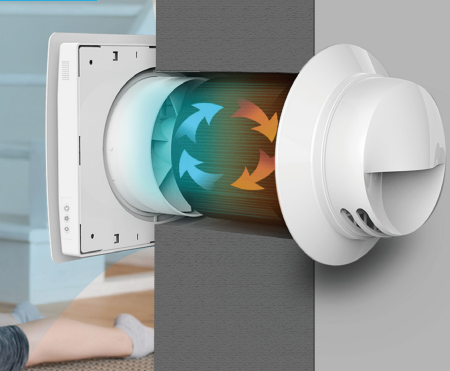Action Plan: What to Consider Before Choosing HRV
Discovering the Benefits of Heat Recovery Ventilation for Power Effectiveness in Houses
Heat Recovery Ventilation (HRV) systems supply home owners a useful technique to improving energy effectiveness. By reclaiming heat from outward bound air, these systems can substantially decrease home heating and air conditioning expenses. Furthermore, they provide a steady supply of fresh air, boosting indoor air quality and comfort degrees. As homeowners consider sustainable choices, comprehending the subtleties of HRV systems comes to be progressively important. What variables should one examine before making such an investment?
Comprehending Heat Recovery Ventilation Systems

How HRV Enhances Indoor Air High Quality

Energy Savings: The Monetary Advantages of HRV
Optimizing energy efficiency, heat recovery ventilation (HRV) systems use considerable financial advantages for home owners. By recovering and reusing warm from exhaust air, HRVs significantly lower cooling and heating prices. This innovation can result in power cost savings of as much as 30%, relying on environment and use patterns. Home owners typically see minimized energy bills soon after installment, making HRVs a financially smart financial investment with time. In addition, lots of areas give rewards or refunds for energy-efficient upgrades, even more enhancing the economic charm. As energy prices proceed to increase, the cost-effectiveness of HRVs becomes increasingly clear. On the whole, the consolidation of HRV systems not only promotes power effectiveness but additionally adds to long-lasting financial savings for houses.
The Environmental Impact of Heat Recovery Ventilation
A significant environmental advantage of heat recovery ventilation (HRV) systems lies in their capacity to lower overall power consumption. By recovering warm from exhaust air and moving it to incoming fresh air, HRV systems reduce the requirement for energy-intensive heating and cooling techniques. This reduction in energy need adds to reduce greenhouse gas discharges, as less fossil fuel is required to preserve comfortable indoor temperatures. Additionally, HRV systems enhance indoor air high quality by successfully trading stale air with fresh outside air, decreasing reliance on mechanical cooling systems that can harm the setting. In general, the application of HRV systems sustains sustainable living practices and straightens with worldwide efforts to fight climate change by promoting energy efficiency in domestic settings.
Choosing the Right HRV System for Your Home
Just how can house owners ensure they select the right heat recovery try here ventilation (HRV) system for their needs? Initially, they should examine their home's dimension and layout, as these variables influence airflow requirements. Next off, reviewing the system's performance rankings is vital, as greater rankings suggest much better performance and power cost savings. Homeowners need to additionally take into consideration setup and maintenance prices, contrasting various brands and models for worth. Furthermore, it is essential to review sound degrees, as some systems operate even more silently than others. look at here Consulting with heating and cooling experts can provide tailored recommendations based upon specific home problems. Lastly, checking out user reviews and warranties can help in making an informed choice, guaranteeing that the selected HRV system successfully boosts indoor air quality and power effectiveness.
Frequently Asked Questions

Just how Frequently Should I Clean or Preserve My HRV System?
The frequency of cleansing or maintaining a warmth recuperation air flow (HRV) system usually relies on usage and ecological aspects. Usually, it is a good idea to execute maintenance every 6 months to ensure peak efficiency and air top quality.

Can HRV Solutions Assist Lower Humidity Degrees Indoors?
HRV systems can successfully minimize interior humidity degrees by exchanging stale, moist air with fresh, drier air from outdoors. HRV Heat Recovery Ventilation. This process helps keep a balanced interior setting, boosting comfort and protecting against moisture-related issues
What Is the Life expectancy of a Common HRV System?
The life expectancy of a common heat recovery ventilation (HRV) system differs, generally lasting between 10 to 15 years. Routine upkeep can expand its performance and operational life, ensuring peak performance throughout its use duration.
Exist Any Noise Worries With HRV Equipments?
Noise worries with HRV systems can emerge, particularly from follower procedure. Many modern systems are created to decrease audio levels, ensuring they operate silently while preserving effectiveness, which addresses prospective disturbances in living atmospheres.
Can I Mount an HRV System Myself, or Do I Required an Expert?
The specific contemplated whether to install the heat recovery additional info ventilation (HRV) system personally or employ a professional. Generally, while do it yourself installation is possible, proficiency guarantees correct functionality and conformity with local structure codes, boosting system efficiency.